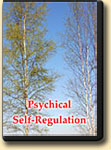The Highest Yoga
|
Spiritual Practices:
|
Cleansing of the Chakras. Opening of the Spiritual HeartUpon achieving the mastery of the above said, we can get down to the cleansing of the chakras. The condition of the chakras is closely interrelated with the condition of the physical organs located in the corresponding parts of the body. The chakras play an important role in supplying the organs with energy, while diseases of the organs negatively affect the condition of the chakras. For example, the following chakras are responsible for the following organs: — anahata: heart, lungs, arms, and mammary glands; — manipura: among other organs — stomach and other structures of the digestive system; — svadhisthana: the organs of reproduction, urinary bladder, legs, and others; — sahasrara: forebrain hemispheres; — ajna: the rest of the brain, as well as eyes, ears, nose, and nasopharynx; — vishuddha: the entire neck, thyroid, both jaws, including teeth, and others. (The border between the “spheres of influence” of ajna and vishuddha coincides with the palate). * * * Let us get down to work with the chakras. There exist certain combinations of sounds (a sort of mantras), singing of which contributes to the development of the chakras by producing resonant vibrations. Mantras will also help us attain clear sensation of our chakras. Here are these mantras: for sahasrara — AM (a-a-am), for ajna — VOM (vo-o-om), for vishuddha — HAM (ha-a-am), for anahata — YAM (ya-a-am), for manipura — RAM (ra-a-am), for svadhisthana — VAM (va-a-am), for muladhara — LAM (la-a-am). One has to sing these mantras gently, producing high frequency sounds (taking female voices as a pattern for the pitch), but not in a loud voice, at the same time concentrating in the corresponding chakras. When moving the concentration of the consciousness into the next chakra, one should enter it from behind the back or the nape of the neck, as if getting into a cell or a niche. One has to repeat the whole set of mantras several times, trying to achieve clear perception of vibrations in all chakras. This exercise must be practiced every day. When there is no possibility to sing the mantras aloud, one may sing them mentally to oneself but only after mastering singing them aloud. Let us pay maximum attention both at this and the next stages to work with the anahata chakra — just doing this makes life brighter and more joyous. If the very subtle and gentle singing of the mantras for chakras has not been mastered — no further work can be successful. Men usually are the ones who have this difficulty especially frequently, since subtlety is often unknown to them. The following recommendation may help them. Take some water in the mouth and start gargling so that a gurgling sound can be heard. Bring the water lower down the throat. The sound must become higher. Let it reach as high of a pitch as possible. Those are the notes, at which one has to sing the mantras for chakras. Let us learn another method of cleansing and development of the chakras. Visualize behind the anahata a white shining 3-dimensional figure formed by four equilateral triangles with joined sides. This figure is called a tetrahedron. Insert this figure into each chakra (one chakra at a time) from behind, with one of the tetrahedron vertices looking forward, while rotating it rapidly counterclockwise (looking from behind) around a horizontal axis coming from back to front. For the two outermost chakras the rotation of the tetrahedron must be performed around a vertical axis; in case of sahasrara the vertex of the tetrahedron must look upward, while in case of muladhara — downward. The direction of the rotation of the tetrahedron for these two chakras must be counterclockwise (looking from inside the body). Performance of this exercise will be easier if we combine it with “blowing” of the corresponding mantra into each chakra. All exercises with the chakras described above (as well as with meridians, which will be described later) are more efficiently performed while standing. But there is a simple exercise with the spiritual heart that everyone may try doing without any pre-conditions. Imagine that your head has moved into the chest. Feel the nose, the forehead, the lips. Move the lips. In order for the head not to rise to its usual position, we may imagine that we put a hat on the head. Then follows the most important thing: we need to open the eyes and to “blink” the eyelids there… From now on, learn to look at the outside world from the chest. The world will look completely different: not as tough and hostile, but as subtle, tender, and responsive to the emotions of love. This is what is called opening of the spiritual heart. As we can see, this is quite easy to do. The only thing required here is one’s will! Later on, one needs to learn to look from anahata not only forward but also backward. One has to perform the exercices with the chakras and all further meditative trainings with open eyes. (You may try to find out yourself — why?) * * * Having mastered this, we have to do the same with all other chakras. (The “windows” of muladhara and sahasrara look downward and upward respectively. But we can look also forward and backward from these chakras). Learning to look backward is important not only because it contributes to the development of the chakras, but also because by looking forward we accustom ourselves to seeing the world of material objects, while pure and subtle eons with the Consciousness that lives in them are found behind. Moreover, by performing this exercise, we prepare ourselves for future conscious exits from the body. And this must be also performed backward from anahata. Vladimir Antonov, Ph.D. (in biology) Translated from Russian |
|


